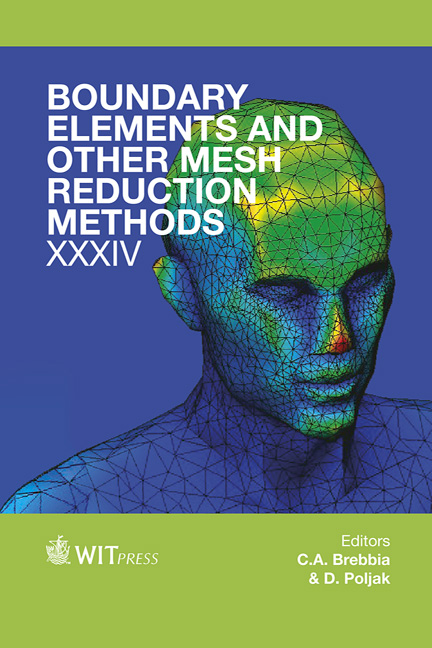Dynamic Simulation Of Heat Conduction Using A BEM Model In The Frequency Domain: An Experimental Validation
Price
Free (open access)
Transaction
Volume
53
Pages
8
Page Range
157 - 164
Published
2012
Size
593 kb
Paper DOI
10.2495/BE120141
Copyright
WIT Press
Author(s)
I. Simões, N. Simões, A. Tadeu & M. Reis
Abstract
The heat transfer by conduction across a system containing heterogeneities, when subjected to unsteady conditions, is simulated using a boundary element method (BEM), formulated in the frequency domain. The proposed formulation is validated experimentally. In the laboratory tests a steel inclusion was embedded in a confined host medium and unsteady temperatures were applied to its boundary. The thermal properties of the host media tested (molded expanded polystyrene) has been previously defined experimentally. The results showed that the BEM solutions agree well with the experimental results. Keywords: conduction, transient heat transfer, BEM; experimental validation, frequency domain, Green’s functions. 1 Introduction As the analytical solutions for simulating heat diffusion are only known for very simple geometric and material conditions, such as homogeneous full spaces, half-spaces and circular cylindrical inclusions, various numerical techniques have been proposed for more complex problems. Unsteady state conditions can be split into three formulation groups: time domain; transformed domain, by applying the Laplace transform, and frequency domain, by applying a Fourier Transform.
Keywords
conduction, transient heat transfer, BEM; experimental validation, frequency domain, Green’s functions.





